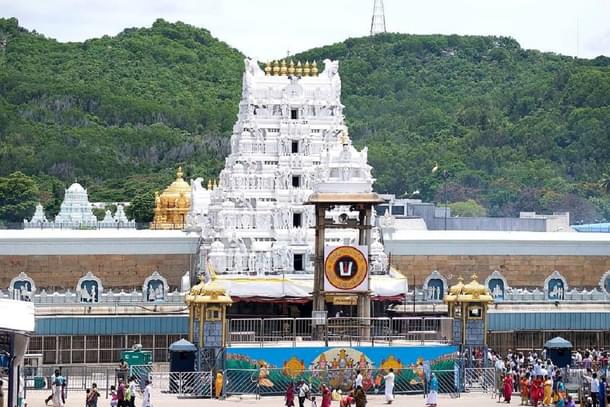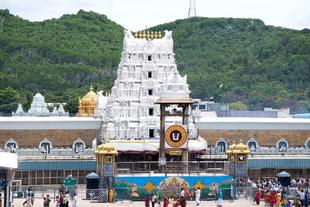Ideas
Hindu Society's Response To The Tirupati Laddu Story Brings These Challenges Back Into Focus
Aravindan Neelakandan
Oct 01, 2024, 07:26 PM | Updated Nov 14, 2024, 11:54 AM IST
Save & read from anywhere!
Bookmark stories for easy access on any device or the Swarajya app.


The Tirupati laddu controversy has left the Hindu community in a state of shock.
While questions around the prasad are important, one notable aspect of this entire story has been the reactions on social media and in public discussions.
This incident reveals a troubling pattern that highlights the growing divisions within Indian society. It underscores the urgent need for Hindutva proponents to recognise and address the underlying tensions that are being exploited by anti-Hindu elements.
In nearly every household in souther India, it seems no month goes by without the arrival of laddu prasad from Tirupati, brought by a relative or neighbour who has recently visited the revered temple of the Lord of the Seven Hills.
When the controversy erupted, alongside the outrage on social media, there were equally numerous memes, videos, and images mocking the shock and humiliation experienced by ordinary devotees.
Some memes targeted the Brahmin community in Tamil Nadu and asked if they liked the beef. Even popular social media influencers joined in the bandwagon. One perverse argument to rationalise the entire episode was it being apt payback for beef-related attacks carried out by Hindutva zealots against minority community members in northern India.
The Vaishnavites of southern India cut across all castes. There are Scheduled Community leaders, Brahmins, Scheduled Tribal communities and Backward Caste Hindus. They all hold Tirupati sacred. Tamil classics hail the Lord of the Seven Hills in devotional grandeur.
Neither the Brahmins of southern India nor the Vaishnavites cutting across all southern states have anything to do with the attacks in the north. In fact, most of the attacks were more a violent conflict between cattle smugglers and cattle owners, with a few numbers of hate crimes.
Even with respect to those few hate crimes, the Prime Minister himself condemned them. So to rationalise the laddu incident or justify it using the cattle-related violence of the north, is nothing but a display of abhorrent behaviour.
The deviant psychology of this phenomenon should be a matter of great concern for Hindus.
If one looks carefully at these memes, one finds that they use the fig leaf of social justice.
Social justice in Tamil Nadu is nothing but an anti-Brahmin, anti-Hinduism discourse in another name. Where unmoderated by Indian social and cultural reality, Dravidianist social justice is a copy of European anti-Semitism.
Thus, every Hindu ritual and every Hindu display of devotion is tied to a narrative of social oppression and any vulgarity against Hinduism becomes rationalised as a crusade for social justice.
Obscene attacks on Hinduism have nowhere else been as normalised as they have been in Tamil Nadu. From political platforms, academic daises, cinema halls to social influencers, this bitterness against Hinduism masquerading as fight for social justice, goes unchallenged and is getting increasingly attractive to those who want easy career progress and instant popularity.
Now we come to another aspect of the story.
Hindus passionately revere Tirupati. There is enthusiasm and endurance of any hardship in making arduous pilgrimages to even shrines like Sabarimala or undertaking a padayatra in the scorching sun to Palani hill. Yet all this fervour, all this bhakti, all this devotion does not translate into political Hindu awareness.
Political Hindu awareness is today necessary for the survival of Hindu society. If Hindus of India do not want to face the fate of the Hindus of Afghanistan, Pakistan and Bangladesh, they have to have political Hindu awareness.
Unfortunately Hindus have greater political jati awareness, which runs counter to political awareness. This is dangerous to the progress of the Hindu nation, health of Hindu society and ultimately a threat to the very Hindu existence.
Why does this happen?
Because we have failed to remove the adulteration of Dharma with caste. To this day, Dharmacharyas could not stand united to announce that there is no place for jati and jati discriminations in the Hindu sacred texts. They have failed to announce categorically that Jathi a social reality and varna a social conception, but they are just that social systems and have nothing to do with Dharma. Dharma does not stand on, or need on Jathi and/or varna.
This adulteration of Sanatana Dharma with birth-based societal discrimination is a toxic contamination that has weakened the Hindu social organism.
A prayaschita/purification ritual has been done for the adulteration done in the case of Tirupati Laddus.
Now enlightened Hindu spiritual leadership should do a more intense prayaschita against these two adulterations of the collective Hindu psyche namely, adulteration of social justice with anti-Brahminism and adulteration of Santana Dharma with casteism.





